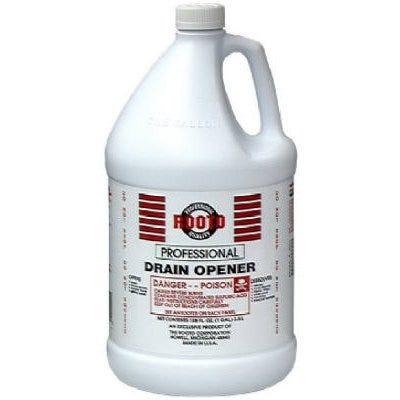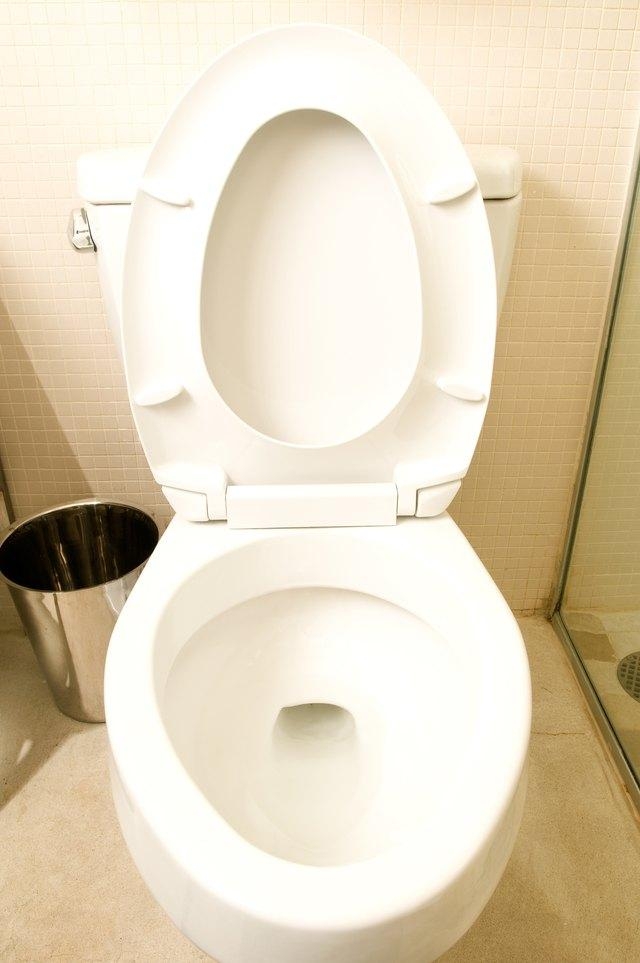What to do if sulfuric acid did not clear drain?
Have you ever poured sulfuric acid down your drain to clear a clog, only to find that it didn’t work? It can be frustrating and leave you wondering what to do next.
Sulfuric acid is a common chemical used to clear clogs in drains, but it’s not always effective. There are several reasons why it may not work, including the type of clog, the age of the pipes, and the concentration of the acid.
If sulfuric acid did not clear your drain, don’t panic. There are several other methods you can try to remove the clog and get your drain flowing again. In this article, we’ll explore some of the reasons why sulfuric acid may not work, and offer alternative solutions to clear your drain.
What is Sulfuric Acid?
Sulfuric acid is a highly corrosive and potent inorganic compound with the chemical formula H2SO4. It is commonly referred to as battery acid, and it is one of the most widely used industrial chemicals in the world. Sulfuric acid is a colorless, odorless, and oily liquid that is extremely dense and can quickly cause severe chemical burns upon skin contact.

The production of sulfuric acid is a significant process in the chemical industry, and it is used in many applications such as cleaning clogged pipes, refining crude oil, and manufacturing fertilizers, plastics, dyes, and detergents. The manufacturing of sulfuric acid involves the reaction between sulfur dioxide (SO2) and water (H2O), which produces sulfuric acid and heat in an exothermic reaction.
Sulfuric acid is considered an extremely dangerous substance due to its corrosive properties. In solution, sulfuric acid is highly reactive and can cause serious damage to human tissue. Contact with skin can cause severe chemical burns, deep ulceration, and scarring, and it can also destroy several types of fabrics and metals. Inhaling sulfuric acid vapors can cause irritation of the nose, throat, and lungs, leading to respiratory problems. If ingested, the acid can cause severe damage to the digestive system, leading to vomiting, diarrhea, and death.
What to do if Sulfuric Acid did not clear drain?
While sulfuric acid is commonly used as a drain cleaner to unclog slow-moving drains and remove tough grease clogs, it may not always be effective in every situation. If you’ve already attempted to clear your drain with sulfuric acid and still have a clog, there are a few steps you can take to address the issue.
First, it’s important to remember that sulfuric acid isn’t the only option when it comes to clearing a clogged drain. Alternative solutions such as sodium hydroxide or hot water may be effective in certain situations. However, it’s important to note that these options also come with their own set of risks and should be used with caution.
If you’ve exhausted all options of chemical drain cleaners, it may be time to try a mechanical solution. Plumbing snakes and augers can be used to manually remove clogs from your drain. These tools can be purchased at most hardware stores or rented from a plumbing supply company. While they may require a bit more elbow grease than drain cleaners, they are often more effective and can also be used on a variety of drain types.
Another option to consider is contacting a professional plumber. While this may be the most expensive option, it’s also the most reliable. Plumbers have the necessary tools and expertise to diagnose and solve clogs that cannot be removed by household solutions.
Safety Considerations
When dealing with a clogged drain, it’s important to prioritize safety above all else. Whether you’re using sulfuric acid or another type of drain cleaner, there are a number of safety considerations that should be taken into account.
First and foremost, it’s important to wear protective gear when handling any type of drain cleaner. This includes safety glasses and rubber gloves, which can help protect your eyes and skin from exposure to harsh chemicals.
Additionally, it’s important to follow the safety guidelines listed on the drain cleaner label. This may include instructions to avoid mixing the drain cleaner with other types of chemicals, as well as recommendations for how long to let the cleaner sit in the drain.
Another important consideration is the type of drain cleaner you’re using. While sulfuric acid solutions may be effective at removing clogs, they also produce toxic fumes such as sulfur dioxide. For this reason, it’s important to use these types of solutions in a well-ventilated area or wear a mask to avoid exposure to harmful gases.
If you have plastic pipes or a septic tank, it’s also important to avoid the use of harsh chemicals whenever possible. Many chemical drain cleaners can damage plastic pipes or interfere with the delicate balance of bacteria in a septic tank, causing damage to your plumbing and potentially costing you hundreds or even thousands of dollars in repairs.
In general, it’s always a good idea to consider alternative solutions if using chemical drain cleaners is not an option. These might include using a plumbing snake or auger to manually remove the clog, or even contacting a professional plumber to have the problem resolved.
Alternatives to Sulfuric Acid
While sulfuric acid can be a powerful tool for clearing clogged drains, it’s not always the best choice for everyone or every situation. Fortunately, there are plenty of alternative solutions available that can help you clear your drain without the use of harsh chemicals like sulfuric acid.
One of the most popular alternatives to sulfuric acid drain cleaners is sodium hydroxide, also known as lye. This chemical works by breaking down organic material like hair and grease, much like sulfuric acid does, but it doesn’t produce as many toxic fumes. However, it’s important to note that sodium hydroxide can still be dangerous if not handled properly, and it can cause chemical burns if it comes into contact with skin or eyes.
Another option is to try using hot water to flush out the clog. This is particularly effective if the clog is caused by grease buildup, as hot water can help melt the grease and wash it away. You can also try pouring boiling water down the drain followed by a cup of baking soda and then another cup of vinegar. The resulting chemical reaction can help break up the clog.
If you’re dealing with a slow-moving drain rather than a complete blockage, you might consider using a plunger. This can be particularly effective for kitchen sinks and bathroom sinks. Simply place the plunger over the drain and pump it vigorously to create suction that can dislodge the clog.
For more stubborn clogs, you might need to use a plumbing snake or auger to physically remove the blockage. This tool involves inserting a long, flexible cable into the drain and using it to break up or remove the clog. This can be a messy and time-consuming process, but it’s often effective for deeper clogs that other methods can’t fix.
When using any type of drain cleaner, it’s important to consider the safety guidelines listed on the label and to wear protective gear such as gloves and safety goggles. If you’re not comfortable using chemicals or tools to clear your clog, it’s always a good idea to contact a professional plumber to get the job done safely and effectively. With these alternative solutions at your disposal, you can clear your drain without relying on sulfuric acid or other harsh chemicals that can be harmful to your health and your plumbing.
Using Hot Water to Unclog a Drain
Are you dealing with a slow-moving drain or a clog that just won’t budge? While there are plenty of chemical drain cleaners on the market that promise quick and easy solutions, they’re not always the best option. Not only can they damage your pipes, but they also often contain harsh chemicals that can be dangerous for you and the environment. Instead, consider using hot water to unclog your drain.

First and foremost, hot water is an inexpensive and eco-friendly solution. All you need is access to hot water – either from your tap or by boiling a pot on the stove. Plus, it won’t harm your pipes or septic system like harsh chemicals could.
Hot water works particularly well for clogs caused by grease buildup, which is a common issue in kitchen drains. The hot water helps to melt the grease and wash it away. Simply run hot water down your drain for several minutes, either by filling up a kettle or by turning on your faucet to its highest setting. Let the hot water work its magic for at least five minutes, making sure to avoid any contact with the water since it will be extremely hot.
For even tougher clogs, you can try adding baking soda and vinegar to the mix. First, pour a pot of boiling water down the drain to loosen the clog. Then, add half a cup of baking soda and let it sit for several minutes. Follow up with a mixture of one cup of vinegar and one cup of hot water. The chemical reaction between the vinegar and baking soda should help to break up the clog. Let it sit for at least 10 minutes before flushing the drain with another pot of boiling water.
It’s important to note that hot water may not work for all types of clogs. If you’ve tried hot water and other home remedies without success, it might be time to call in a professional plumber.
Meet Lila Robinson, an expert in the world of plumbing with a talent for delivering valuable insights and captivating articles on an array of plumbing topics. With years of experience handling complicated plumbing issues, Lila has become a go-to resource for homeowners and businesses alike.
Packing vast knowledge in plumbing tools and science, Lila creates a sense of community on her blog and social media accounts, engaging with readers from all walks of life. Her writing style is authentic, unique, and engaging, and she has an exceptional ability to break complex concepts into understandable ideas.
If you have encountered a plumbing issue, chances are Lila Robinson has conquered it. Her articles uncover the underlying problems behind some of the most unexpected plumbing problems, from tankless water heater error codes to drain snakes in vents.
Whether you’re a beginner or an experienced plumber, Lila Robinson’s blog has something for you. Follow her social media accounts to keep up-to-date with the latest posts and join the conversation.